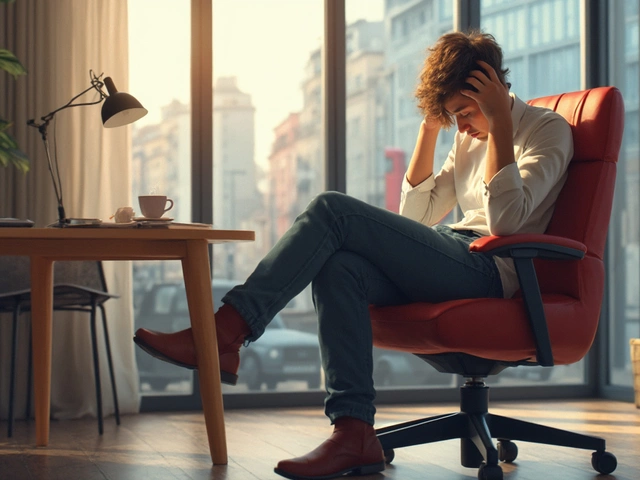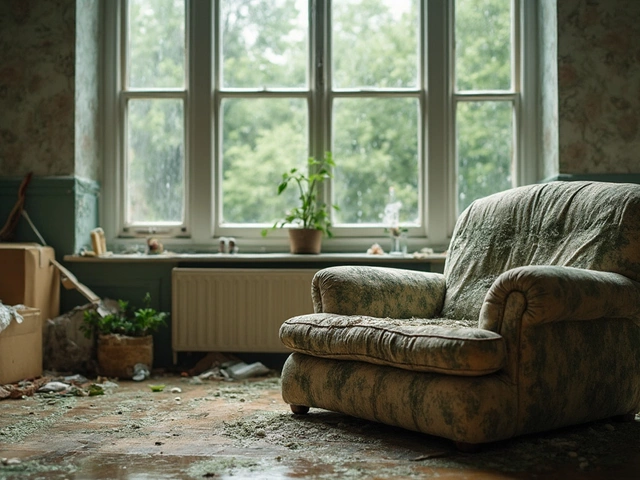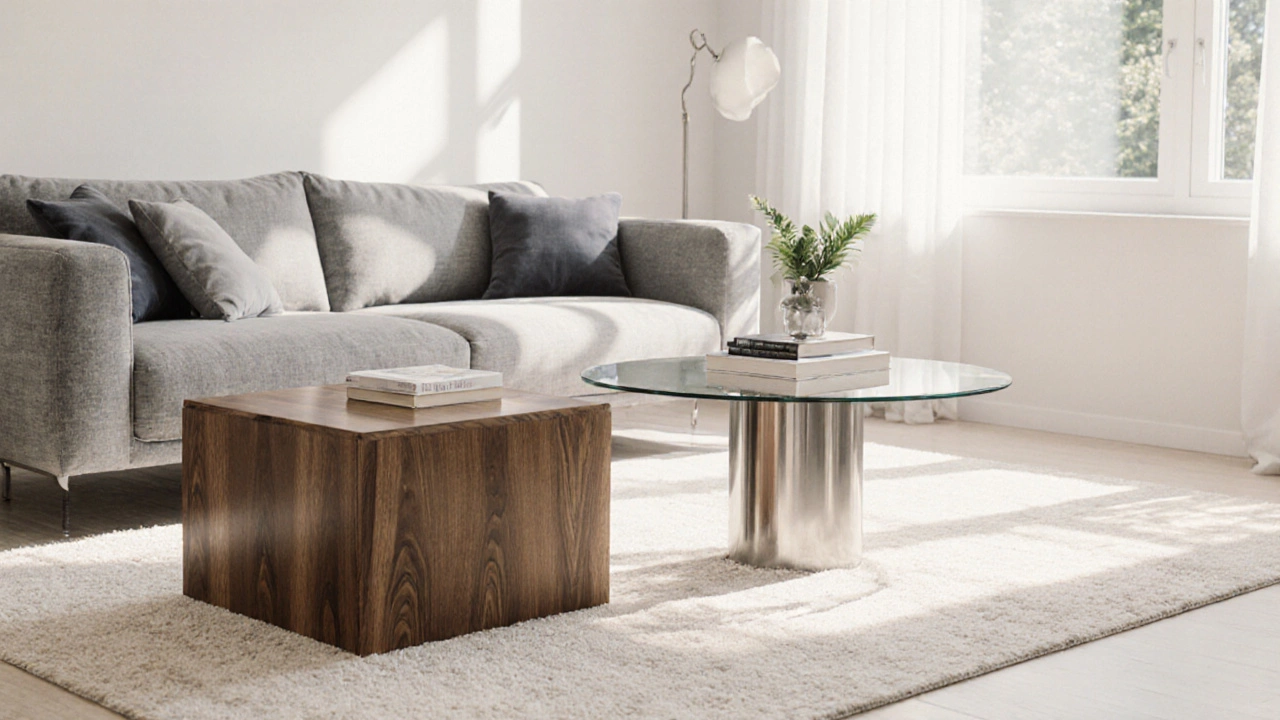 23
Oct,2025
23
Oct,2025
Choosing the right coffee table isn’t just about picking a spot for your mugs - it sets the tone for the whole living room. When you’re stuck between a square and a circle, the decision hinges on room layout, traffic flow, and personal style. Below you’ll find a step‑by‑step walk‑through that helps you match the right shape to your space, avoid common pitfalls, and feel confident about the final call.
Key Takeaways
- Square tables shine in rooms with strong lines, grid‑like layouts, or when you need extra surface area.
- Round tables work best in tight spaces, around families with kids, or when you want a softer, more social vibe.
- Measure your floor, consider traffic patterns, and match the table’s material to your existing décor.
- Use the comparison chart to see which shape aligns with your style, room shape, and functional needs.
- Follow the decision checklist at the end to lock in the perfect choice.
Understanding the Two Shapes
First, let’s define the contenders.
Coffee Table is a low‑profile piece of furniture that sits in front of a sofa and serves as a surface for drinks, books, or decorative items. While the function stays the same, the shape dramatically changes how it interacts with the room.
Square coffee table features four equal sides and sharp corners, providing a solid, geometric footprint. Its right‑angled edges echo the lines of a rectangular sofa or a grid‑style rug, creating a cohesive visual block.
Round coffee table (often called a circle coffee table) offers a smooth, continuous edge with no corners, encouraging a more fluid, organic feel. The circular silhouette can soften hard angles elsewhere in the room.
Both shapes can be made from wood, glass, metal, or a mix, but the geometry influences everything from placement to how many people can comfortably gather around it.
Measure Your Space - The First Decision Point
Before you fall in love with a design, double‑check that it actually fits. Here’s a quick measuring routine:
- Measure the width of your sofa and any adjoining chairs. Add 18‑24 inches (about 45‑60 cm) to each side to determine the ideal clearance.
- Check the room’s length from the back wall to the front edge of the sofa. You’ll want at least 12‑18 inches (30‑45 cm) of walking space.
- Plot the shape on graph paper or a phone app. For a square, draw a rectangle that matches the length of the sofa plus clearance; for a round, draw a circle with a diameter that leaves the same walking gap.
- Consider traffic flow. If the doorway or a high‑traffic path passes near the coffee table’s intended spot, a round shape often reduces the chance of bumping into corners.
When you finish, you’ll have two clear footprints to compare against your floor plan.
Material Matters - Wood, Glass, Metal, and More
Shape is only part of the story; the material decides durability, weight, and visual weight.
Wood is a classic choice that adds warmth and can be stained or painted to match any palette. Heavy wood (like walnut) feels substantial and works well with square tables, reinforcing their sturdy vibe.
Glass tops create a light, airy look that visually expands a room. Pair glass with a round base for a floating effect; combine it with a square frame for a modern contrast.
Metal accents (brushed steel, brass) can accentuate industrial or mid‑century modern aesthetics. When paired with a round table, metal legs add a sleek, sculptural touch.
Think about children and pets too - a glass top might sparkle but could also shatter more easily, while wood tolerates scratches.
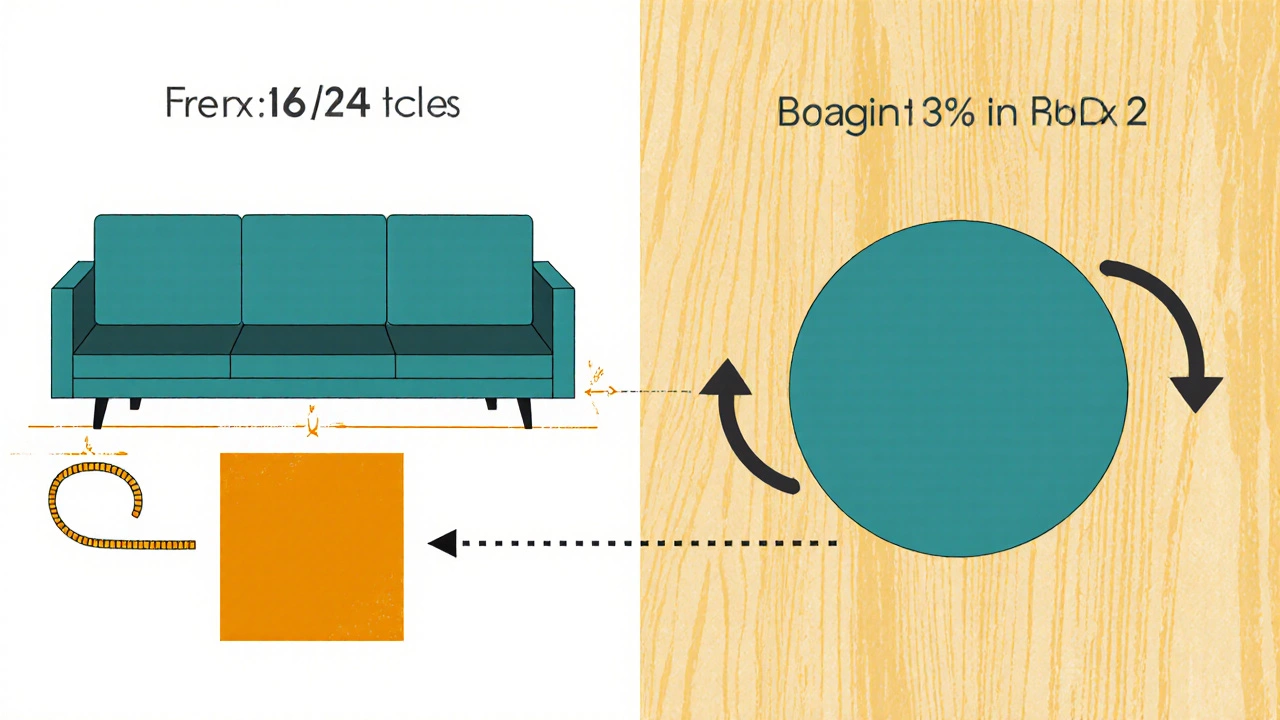
Style Compatibility - Does Your Décor Lean Square or Circle?
Next, match the shape to your overall interior language.
- Mid‑Century Modern: Clean angles, tapered legs, and often a mix of wood and metal. Square tables echo the era’s geometry, but a round table with slim legs works just as well if you favor a softer silhouette.
- Industrial: Dark metal, reclaimed wood, and raw finishes. Square tables in heavy steel reinforce the rugged feel; a round metal pedestal adds an unexpected focal point.
- Scandinavian: Light woods, minimal hardware, and airy layouts. Round tables are popular for their gentle presence, but a small square in light oak blends in nicely.
- Traditional: Rich wood, ornate legs, and classic patterns. Square tables with detailed aprons hold the tradition; a round table with a turned base can also fit if you’re looking for a conversational piece.
Ask yourself: does your room already have a dominant geometric language, or could a contrasting shape create visual interest?
Pros & Cons - Quick Reference
| Aspect | Square | Circle |
|---|---|---|
| Surface Area | Typically offers more usable surface, especially for corners. | Often slightly less surface, but provides ample central space. |
| Traffic Flow | Sharp corners can be obstacles in tight rooms. | No corners - easier to navigate around for families or pets. |
| Style Flexibility | Matches grid‑like modern, industrial, or traditional rooms. | Softens angular décor, works well in Scandinavian, coastal, or eclectic spaces. |
| Stability | Heavier base, less likely to tip over. | Depends on pedestal design; may require a broader footprint. |
| Kids & Pets | Corners can be a hazard; choose rounded edges if safety is priority. | Inherently safer due to lack of corners. |
Decision Checklist - Your Personal Shortcut
Print or bookmark this list and tick each item as you go.
- Measure clearances - does the shape stay within 12‑18 inches of high‑traffic paths?
- Identify dominant room geometry - are your existing pieces mostly rectangular or circular?
- Consider family needs - are kids or pets constantly around the table?
- Pick a material that complements your sofa and rug (wood, glass, metal).
- Match the style - does the shape enhance or clash with your interior theme?
- Test the weight - will the table feel too light (risking tipping) or too heavy (hard to move)?
If you answered “yes” to most square‑related points, go square. If the majority lean toward round, take the circle.
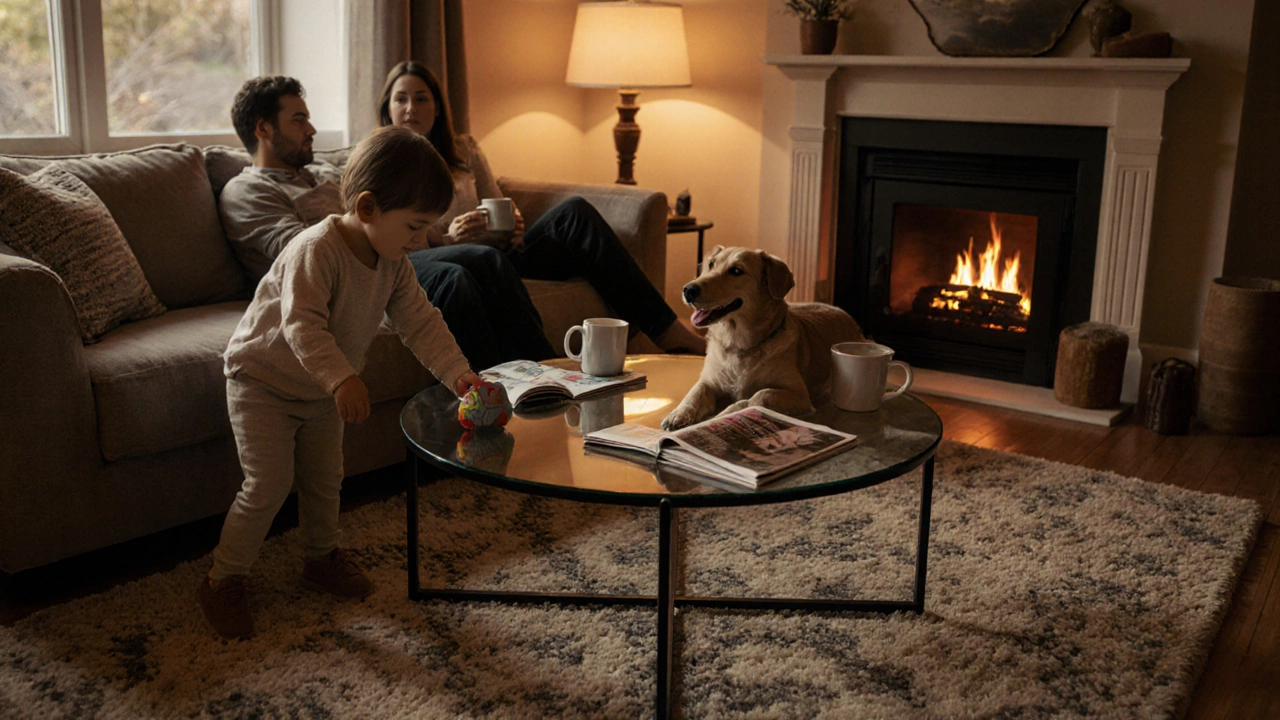
Real‑World Examples - How Others Chose
Example 1 - Urban Loft: A 12‑ft‑wide loft with an industrial sofa set featured a large reclaimed‑wood square coffee table. The rectangular rug anchored the space, and the square edges echoed the exposed‑brick walls. The result? A cohesive, grounded look that felt intentionally structured.
Example 2 - Family Apartment: In a 10‑ft‑wide apartment with a sectional and a toddler, the homeowner picked a 36‑inch diameter round glass table on a thin metal base. The lack of corners prevented bump‑ins, and the transparent top kept the room feeling larger.
Both cases illustrate that the right shape solves a specific problem rather than just following a trend.
Final Thought - Trust Your Eye, Back It With Data
At the end of the day, you’re the one living with the table. Use the measurements, style cues, and safety checklist as a guide, but also sit down, visualize, and imagine the daily flow. When you combine practical data with a gut feeling about how the shape makes the room feel, you’ll land on the perfect coffee table shape that works for years to come.
Frequently Asked Questions
Can I use a round coffee table with a rectangular sofa?
Absolutely. Pairing a round table with a rectangular sofa creates a pleasant contrast - the sofa provides strong lines while the table adds a softer focal point. Just keep enough clearance around the table so chairs can slide in easily.
Is a glass top better for small rooms?
Yes. Glass tops reflect light and don’t add visual bulk, making a room feel larger. Pair them with a round shape for the ultimate space‑saving illusion.
What height should a coffee table be?
Aim for 16‑18 inches (40‑45 cm) - roughly the same height as the seat of your sofa. This height lets you reach drinks without stretching or bending.
Do round tables really improve safety for kids?
While no table can eliminate bumps entirely, the lack of sharp corners reduces the severity of injuries. Adding a soft rug underneath adds another layer of protection.
How do I choose the right size for a square table?
Measure the width of your sofa and add 18‑24 inches on each side. This rule of thumb ensures enough surface without crowding the seating area.

